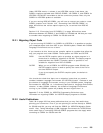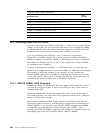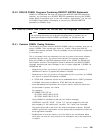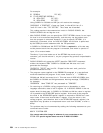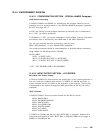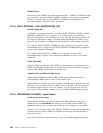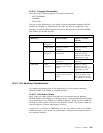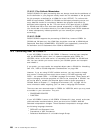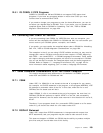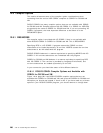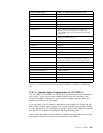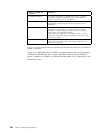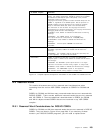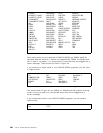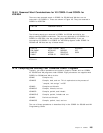
12.5.1 VS COBOL II CICS Programs
COBOL for OS/390 and VM and OS/390 do not support CICS macro-level
programs. If you have any programs written in macro-level CICS you must
convert them to command-level CICS.
If you need to change your programs to cater for these differences, you can do
so before you migrate them to OS/390. Then, if you prefer, you can transfer the
compiled object code to OS/390 for linkediting. See 12.2, “VSE to OS/390
Migration Considerations” on page 250.
12.6 Converting from COBOL for VSE/ESA
If you are converting from COBOL for VSE/ESA then, with one exception, your
source will be compatible with COBOL for OS/390 and VM. You can transfer your
source code to your OS/390 system, recompile, and linkedit.
If you prefer, you can transfer the compiled object code to OS/390 for linkediting.
See 12.2, “VSE to OS/390 Migration Considerations” on page 250.
The exception is that if you are using LE/VSE callable services you may need to
change their names. Callable services which have names in LE/VSE beginning
with CEE5.... are named CEE3.... in OS/390 Language Environment. These names
will require changing and these programs will have to be recompiled in OS/390.
You will not be able to transfer the compiled object code for these programs to
OS/390. Refer to Chapter 17, “Language Environment (LE)” on page 351 for
more information about migrating your run-time to Language Environment.
12.7 Some Conversion Considerations for all VSE COBOL Compilers
This section discusses some differences in the behavior of COBOL programs
under VSE and COBOL for OS/390 and VM.
12.7.1 VSAM
Under VSE, if a VSAM file is not closed at the end of a program for any reason,
(for example, no CLOSE statement in the program, or the program ABENDs), VSE
will attempt an automatic close of the file. In this case, when the file is next
OPENed, the file status code will be 0.
Under OS/390, if a file is not closed at the end of a program, the next time it is
OPENed, OS/390 will perform an implicit VERIFY on the file, and successfully
open the file. However, the file status code returned in this situation will not be 0,
but 97.
Therefore, if your programs check for a successful OPEN, based on a file status
code of 0, you should also check for a file status code of 97.
12.7.2 DISPLAY Statement
Under VSE, output from DISPLAY statements is interspersed with output from
WRITE statements, and your programs may be coded to take account of this.
This does not happen in OS/390, as OS/390 has the ability to produce multiple
print files and you should make use of this facility.
Chapter 12. COBOL 259



